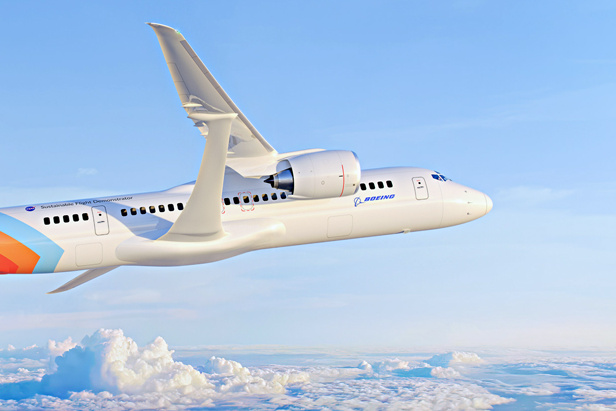The American space agency, NASA, is testing a new type of airplane wing, in partnership with Boeing. This wing is much longer than average. The longer the wing, the less the plane tends to consume. Due to its length, the wing is held together by struts. This design should contribute to reducing fuel consumption and carbon emissions by 30%. NASA and Boeing intend to apply this wing on their future prototype, supposed to prefigure the planes that will fly in the 2030s and allow the American aerospace industry to achieve carbon neutrality by 2050.
The French company Safran has succeeded in electrifying the operation of a landing gear. Usually, the landing gears are powered by the hydraulic system of the aircraft. But this requires a whole network of pipes that is complex, bulky and heavy. Safran’s innovation calls for an electric pump to generate hydraulic power locally to power wheel steering, as well as nose gear extension and retraction. This innovation makes it possible to have the hydraulic power needed to operate the landing gear, without encumbering the pipe circuit. And it participates in the race to lighten aircraft, which is valuable for saving fuel.
Schiphol Airport in Amsterdam, the Netherlands, intends to make its contribution to the decarbonisation of aviation. The Dutch airport is conducting a trial of long-term energy storage that could replace diesel generators, used to power planes on the ground. Huge batteries designed by the firm ESS to avoid any risk of fire or explosion will be tested. In addition to reducing carbon emissions from airport operations, these batteries will help improve air quality for employees and passengers. Schiphol aims for carbon neutrality in 2030. The airport also aims to be waste neutral by the same date.
British firm Rolls-Royce is testing its latest find: the Ultra Fan. This prototype is nothing less than the largest aircraft engine in the world. Although it may seem counterintuitive, this giant engine with a wingspan of 3.55 meters should allow long-haul flights to consume much less fuel. It offers a 10% improvement over the largest engine in service. This is the first time that the British engine manufacturer has tested an entirely new engine architecture. Rolls-Royce intends to transfer certain technologies developed in this prototype to other engines already in service, to make them benefit from fuel-efficient innovations.















